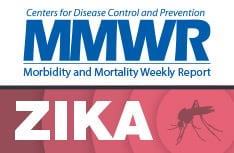Testing for Zika Virus Infections
- Diagnostic testing for Zika virus infection can be accomplished using both molecular and serologic methods.
- Testing is available through commercial laboratories, many state health departments, and the Centers for Disease Control and Prevention.
- Contact your state health department for more information or to facilitate testing.
General Information
Nucleic acid amplification test, or NAAT, is a generic term referring to all molecular tests used to detect viral genomic material. NAAT assays are the preferred method of diagnosis because they can provide confirmed evidence of infection. Despite the specificity of molecular testing, false positive NAAT results have been reported in rare cases and may depend on the type of NAAT assay performed and patient population (i.e., limited or no prevalence of viral transmission) being tested. This problem can be exacerbated when Zika virus testing is performed on patient populations not recommended in the Zika testing algorithms.
Due to the temporal nature of Zika virus RNA in serum and urine, a negative NAAT does not exclude recent Zika infection. For this reason, Zika virus immunoglobulin (Ig) M antibody testing is recommended in certain situations. IgM levels are variable, but generally become positive starting in the first week after onset of symptoms and continuing for up to 12 weeks post symptom onset or exposure, but may persist for months to years. Zika virus antibody testing is also complicated by cross-reactivity with other flaviviruses, which may make conclusive determination of which flavivirus is responsible for the person’s recent infection difficult. With IgM antibody testing, false-positive results are more common than with NAAT and can occur due to non-specific reactivity or cross-reactivity with other flaviviruses.
Plaque reduction neutralization tests (PRNT) are quantitative assays that measure virus-specific neutralizing antibody titers. PRNTs can resolve false-positive IgM antibody results caused by non-specific reactivity and at times help identify the infecting virus. While most state health departments and many commercial laboratories perform dengue and Zika virus NAAT and IgM antibody testing, confirmatory neutralizing antibody testing using PRNT is currently only available through a limited number of state health departments and CDC. If Zika virus IgM antibody testing is positive and definitive diagnosis is needed for clinical or epidemiologic purposes, confirmatory PRNT should be performed against Zika and other flaviviruses endemic to the region where exposure occurred. PRNT might not discriminate between flaviviruses antibodies, especially following secondary flavivirus infections. Consequently, in areas with high prevalence of dengue and Zika virus neutralizing antibodies, PRNT may not confirm a significant proportion of IgM positive results. Therefore, such jurisdictions should make informed decisions about the utility of PRNT confirmation of IgM results depending on the prevalence of dengue and Zika virus neutralizing antibodies and observed performance of PRNT to confirm IgM test results.
Specific Tests
FDA has issued Emergency Use Authorizationsexternal icon for multiple NAAT assays to diagnose Zika virus infection. Various Zika virus NAATs can be used on serum, plasma, whole blood, cerebrospinal fluid, urine, or amniotic fluid.
FDA has cleared one enzyme immunoassay to detect Zika virus IgM antibodies in serum and currently has issued Emergency Use Authorizationsexternal icon for other IgM antibody assays to diagnose Zika virus infection.


